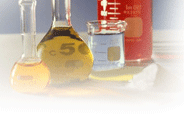Biocaxis > Products > Nucleotide |
|
|||||||||||||||||||||||||||||||||
|
|
||||||||||||||||||||||||||||||||||
 β-Nicotinamide adenine dinucleotide
β-Nicotinamide adenine dinucleotide
Catalog NO.: NDP-011
| CAS NO.: 53-84-9 | Brand: BIOCAXIS
Category
Nucleosides & Nucleotides, Nucleotide
Synonyms
NAD+, Free Acid is also known as β-Nicotinamide
Adenine Dinucleotide.
β-Nicotinamide adenine dinucleotide hydrate, β-DPN, β-NAD, Coenzyme 1, Cozymase, DPN, Diphosphopyridine nucleotide, NAD, Nadide
Molecular Formula
C21H27N7O14P2
Molecular Weight
663.43
General description
NAD+ is a coenzyme composed of ribosylnicotinamide
5'-diphosphate coupled to adenosine 5'-phosphate by pyrophosphate linkage.
Nicotinamide adenine dinucleotide (NAD), is a
very important and essential coenzyme formed by the union of two nucleotides
covalently bond to each other by their phosphates group. NAD is present in
cells either in its oxidative form or in its reduced form, NAD+ and NADH
respectively. They take part in many redox reactions, carrying electrons from
one molecule to another.
NAD+, Free Acid is a major electron acceptor molecule in
biological oxidation reactions. In addition to acting as an oxidizing agent,
NAD+, Free Acid can also act as a signaling molecule as well as a cofactor or
substrate for many enzymes. NAD+, Free Acid is essential for the activity of
several enzymes including poly(ADP)-ribose polymerases
and cADP-ribose synthases. NAD+, Free Acid is used by
some sirtuins to mediate protein deacetylation, producing O-acetyl-ADP-ribose
and nicotinamide as well as the deacetylated protein.
Nicotinamide adenine dinucleotide (NAD) is a ubiquitously
found electron carrier[2] and a cofactor. NAD+
contains an adenylic acid and a nicotinamide-5′-ribonucleotide
group linked together by a pyrophosphate moiety. In NAD+ complexes, the
enzyme-cofactor interactions are highly conserved.
Application
NAD (nicotinamide adenine dinucleotide), Grade I has been
used in the kinetic studies of human class IV alcohol dehydrogenase.
NAD has been used in in vitro glycogen synthase kinase 3
(GSK3) deacetylation assay. It has also been used as a component in assay
mix for the determination of kinetic characteristics using an enzyme-linked
kinetic assay.
Biochem/physiol Actions
Electron acceptor
NAD is also involved in microbial catabolism. β-NAD
acts as a substrate for various enzymes in several cellular processes.
The NAD (nicotinamide adenine dinucleotide)/NADH ratio
regulates the intracellular redox potential, thereby influencing metabolic
reactions in vivo.[8] It works as an electron acceptor.

